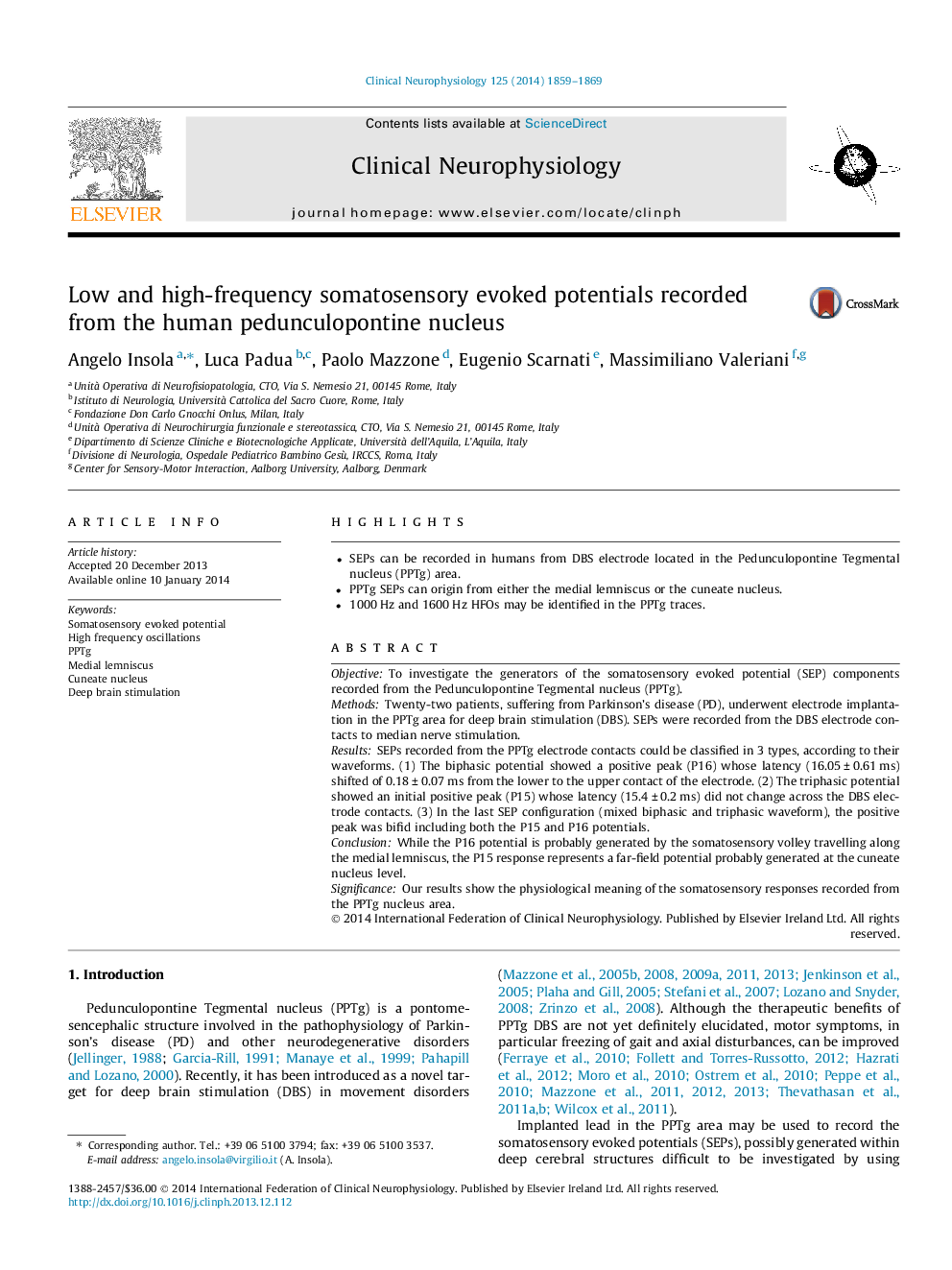| Article ID | Journal | Published Year | Pages | File Type |
|---|---|---|---|---|
| 3043185 | Clinical Neurophysiology | 2014 | 11 Pages |
•SEPs can be recorded in humans from DBS electrode located in the Pedunculopontine Tegmental nucleus (PPTg) area.•PPTg SEPs can origin from either the medial lemniscus or the cuneate nucleus.•1000 Hz and 1600 Hz HFOs may be identified in the PPTg traces.
ObjectiveTo investigate the generators of the somatosensory evoked potential (SEP) components recorded from the Pedunculopontine Tegmental nucleus (PPTg).MethodsTwenty-two patients, suffering from Parkinson’s disease (PD), underwent electrode implantation in the PPTg area for deep brain stimulation (DBS). SEPs were recorded from the DBS electrode contacts to median nerve stimulation.ResultsSEPs recorded from the PPTg electrode contacts could be classified in 3 types, according to their waveforms. (1) The biphasic potential showed a positive peak (P16) whose latency (16.05 ± 0.61 ms) shifted of 0.18 ± 0.07 ms from the lower to the upper contact of the electrode. (2) The triphasic potential showed an initial positive peak (P15) whose latency (15.4 ± 0.2 ms) did not change across the DBS electrode contacts. (3) In the last SEP configuration (mixed biphasic and triphasic waveform), the positive peak was bifid including both the P15 and P16 potentials.ConclusionWhile the P16 potential is probably generated by the somatosensory volley travelling along the medial lemniscus, the P15 response represents a far-field potential probably generated at the cuneate nucleus level.SignificanceOur results show the physiological meaning of the somatosensory responses recorded from the PPTg nucleus area.
